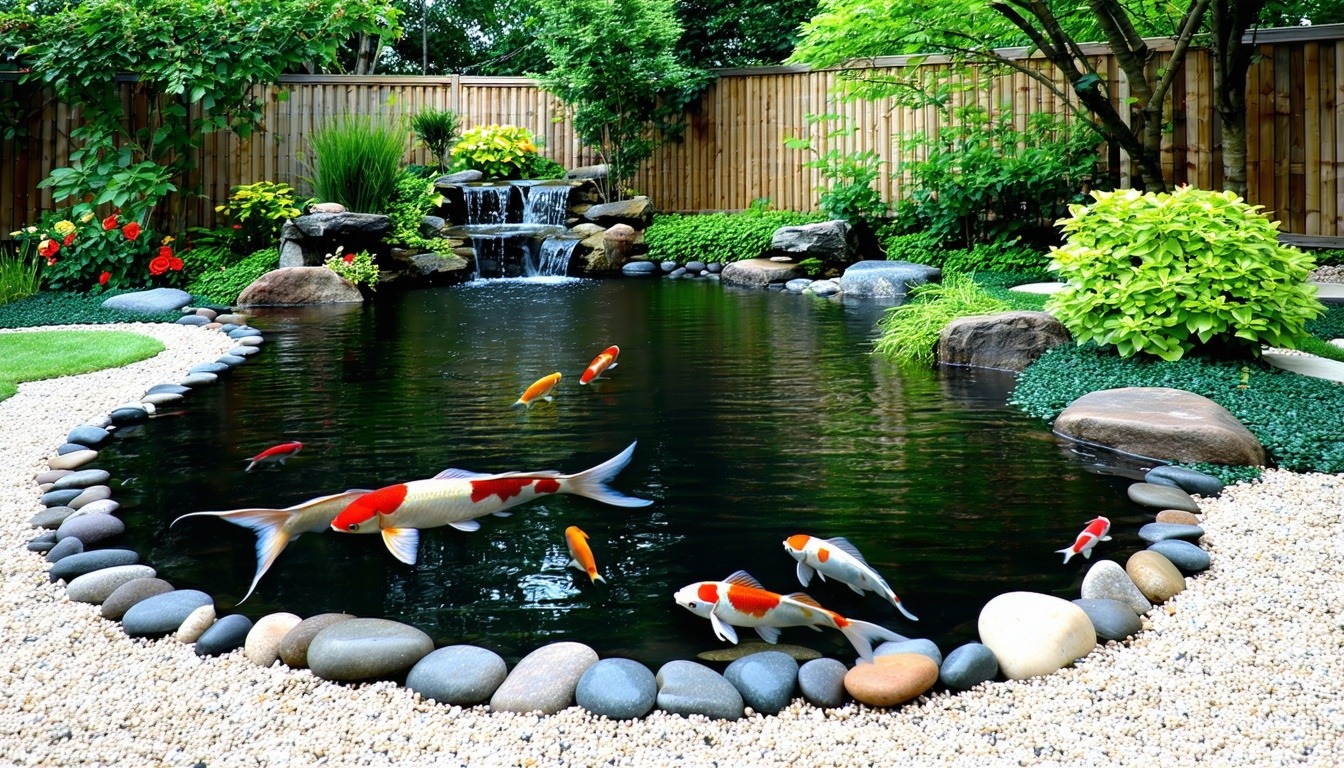So You Want to Build a Pond? Here's What You Need to Know First

Whether you're building a backyard oasis, a koi pond, or a decorative water feature, one thing is certain: you need a reliable liner to keep water where it belongs. Enter the world of flexible poly, a category of plastic sheeting that includes various types of polyethylene liners designed for durability, water resistance, and long-lasting performance.
For many homeowners, choosing a pond liner can be confusing. What’s the difference between a pond liner and a geomembrane? Do you really need UV resistance? And how thick should the liner be?
In this guide, we’ll break it down so you can confidently choose and install the right pond liner for your project.
What Is Flexible Poly?
"Flexible poly" is a broad term that refers to polyethylene-based plastic sheeting known for its pliability and waterproofing capabilities. While the term "flexible" highlights its ability to bend and conform to surfaces, there's much more to it.
Flexible poly comes in several types:
-
LLDPE (Linear Low-Density Polyethylene) – Flexible and often used in pond liners.
-
HDPE (High-Density Polyethylene) – More rigid, but extremely tough and used in industrial applications.
-
LDPE (Low-Density Polyethylene) – Softer and used for vapor barriers and general plastic sheeting.
Why Do You Need a Pond Liner?
Pond liners create a watertight barrier that prevents water from seeping into the ground. Even if your pond seems to hold water naturally, evaporation and seepage will eventually drain it—especially in dry climates.
A properly installed liner:
-
Prevents water loss
-
Keeps soil and debris from muddying your pond
-
Creates a healthier environment for fish and plants
-
Protects your investment for years to come
Types of Pond Liners
1. LLDPE Pond Liners
LLDPE pond liners are the most popular choice for homeowners. They are:
-
Flexible and easy to install
-
Resistant to UV rays
-
Durable against tears and punctures
-
Fish-friendly
Best for:
-
Backyard water features
-
Koi ponds
-
Artificial streams and fountains
2. HDPE Geomembranes
HDPE liners are used in large-scale or commercial projects like:
-
Landfills
-
Wastewater containment
-
Canals and reservoirs
They offer:
-
Extreme durability and chemical resistance
-
Long lifespan
-
Limited flexibility (more suited for flat surfaces)
Unless your pond is huge and industrial in scale, LLDPE is likely the better option for residential use.
Choosing the Right Liner for Your Pond
Here are the main factors to consider:
1. Size of Your Pond
Measure your pond's length, width, and depth, then add an extra 1.5–2 feet on all sides to account for overlap and anchoring.
2. Liner Thickness
-
20 mil liners are good for small decorative ponds.
-
30–40 mil offers more durability for larger or deeper ponds.
3. UV Resistance
Choose a liner that is UV-stabilized if your pond is in full sun. UV rays degrade plastic over time, so this is crucial for longevity.
4. Fish-Friendly Material
Make sure your liner is labeled non-toxic and safe for aquatic life if you plan to include fish.
How to Line a Pond: Step-by-Step
Step 1: Clear and Dig the Area
Mark your pond shape and dig to the desired depth. Remove any sharp rocks, roots, or debris that could puncture the liner.
Step 2: Add a Protective Underlayment
Place a layer of underlayment fabric or sand to cushion the liner. This prevents wear and tear from sharp surfaces.
Step 3: Lay the Liner
-
Gently unfold your liner and center it over the pond.
-
Press it into place, allowing folds to form naturally.
-
Don’t stretch the liner—it needs to move with temperature changes.
Step 4: Secure the Edges
Leave 12–18 inches of overlap around the edges. Anchor the liner with:
-
Decorative stones
-
Edging blocks
-
Turf or soil berms
Step 5: Fill the Pond
Start adding water slowly. As the pond fills, adjust folds and smooth the liner as needed.
Step 6: Trim and Finish
Once filled, trim excess liner and install any edging materials or landscaping around the border.
Tips for Long-Term Pond Liner Success
-
Avoid walking directly on the liner—use stepping stones or floating boards during maintenance.
-
Check for tears regularly, especially after heavy weather.
-
Keep the pond filled to minimize liner shrinkage from sun exposure.
-
Add aquatic plants to shade the liner and enhance water quality.
What About Other Flexible Poly Uses?
If you’ve heard terms like geomembrane or vapor barrier, here’s how they differ from pond liners:
Geomembranes
Used in industrial settings (e.g., landfills, mining ponds), geomembranes are thicker and more rigid than pond liners. They're built for extreme containment, not aesthetics or fish habitat.
Vapor Barriers
These are lightweight polyethylene sheets (usually LDPE) used in construction to prevent moisture infiltration in walls, basements, or crawl spaces.
Important: While all of these fall under "flexible poly," their properties and purposes are different. Be sure to get the right product for your specific application.
Final Thoughts
Lining a pond doesn’t have to be complicated—but choosing the right flexible poly liner is crucial for success. Whether you're adding a peaceful koi pond or a dramatic water feature, investing in the right liner and installing it properly ensures beauty, functionality, and peace of mind for years to come.
Still have questions? Reach out to our team for expert advice and product recommendations tailored to your project.


